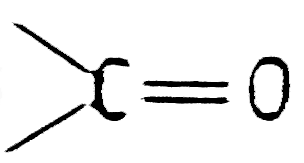Electrophilic addition reaction is easily given by
Acetylene
Ethene
Ethane
Benzene
The correct Answer is:B
Inspite of the fact that the two π-bonds are present in alkynes, these are less reactive than alkenes towards addition reactions (due to symmetrical cylindrical nature of π - electron cloud.) Further, alkynes do not show geometrical isomerism due to their linear structure.
The π - electrons of alkynes are more tightly attached to the carbon atoms than π-electrons in alkene and hence less easily available for addition reactions with electrophiles. As a result, alkynes are less reactive than alkenes towards electrophilic addition reaction. A majority of addition reactions of alkynes are catalysed by heavy metal ions such as Hg2+ and Ba2+ etc.while no such catalysts are needed in case of electrophilic addition reactions to alkenes.
Topper's Solved these Questions
- BOOK - ERRORLESSCHAPTER - HYDROCARBONSEXERCISE - NCERT BASED QUESTION (AROMATIC HYDROCARBON)78videos
HYDROCARBONS
- BOOK - ERRORLESSCHAPTER - HYDROCARBONSEXERCISE - PAST YEAR QUESTIONS88videos
HYDROCARBONS
- BOOK - ERRORLESSCHAPTER - HYDROCARBONSEXERCISE - NCERT BASED QUESTION (ALKENE)76videos
HYDROCARBONS
- BOOK - ERRORLESSCHAPTER - GENERAL ORGANIC CHEMISTRY EXERCISE - ASSERTION AND REASON14videos
GENERAL ORGANIC CHEMISTRY
- BOOK - ERRORLESSCHAPTER - HYDROGENEXERCISE - ASSERTION & REASON6videos
HYDROGEN
Similar Questions
Knowledge Check
- Question 1 - Select One
Both electrophilic and nucleophilic additon reaction are given by
AAlkanesBAlkynesCAlkenesDCarbonyl compounds - Question 2 - Select One
Electrophilic additions reactions proceed in two steps. The first step involves the additions of an electrophile. Name the type of intermediate formed in the first step of the following addition reaction H3C−HC=CH2+H+→?
A3∘ carbanionB1∘ carbocationC2∘ carbocationD1∘ carbanion - Question 3 - Select One
Electrophilic additions reactions proceed in two steps. The first step involves the additions of an electrophile. Name the type of intermediate formed in the first step of the following addition reaction H3C−HC=CH2+H+→?
A2∘ CarbanionB1∘ CarbocationC2∘ CarbocationD1∘ Carbanion
Explain the mechanism of electrophilic addition reactions of alkenes.
View SolutionAlkenes
 and carbonyl compounds
and carbonyl compounds  both contain a π bond but alkenes show electrophilic addition reactions whereas carbonyl compounds show nucleophilic addition reactions. Explain.View Solution
both contain a π bond but alkenes show electrophilic addition reactions whereas carbonyl compounds show nucleophilic addition reactions. Explain.View SolutionWhat are alkenes ? Why do these show geometrical isomerism? Explain the mechanism of electrophilic addition reactions to alkenes.
View SolutionAssertion(A):Benzene does not show electrophilic addition reaction:
Reason Benzene is a cyclic unsaturated hydrocarbon.View SolutionElectrophilic addition reactions proceed in two steps. The first step involves the addition of an electrophile. Name the type of intermediate formed in the first step of the following addition reaction.
H3C−HC=CH2+H+→?View Solution

